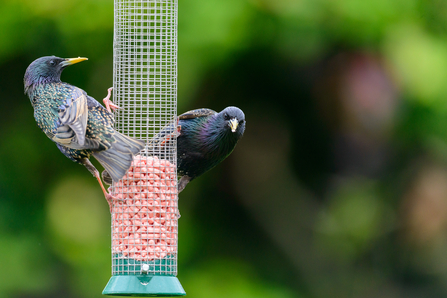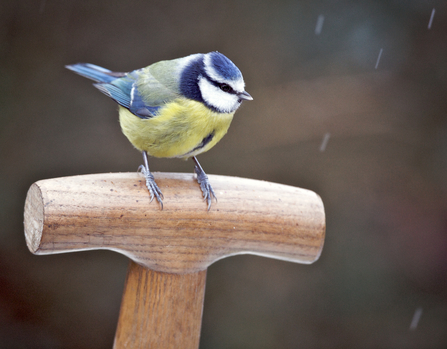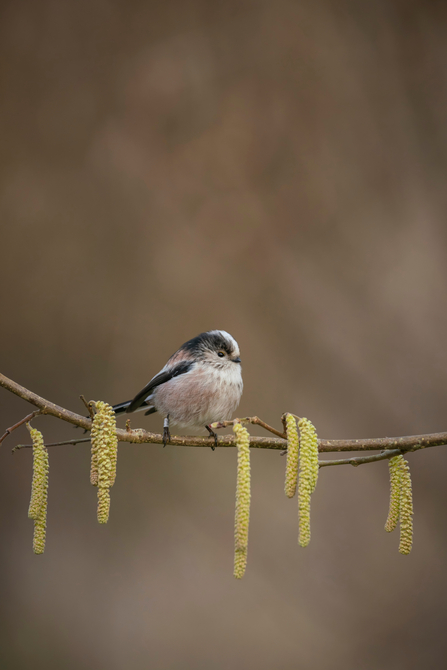If you're a member of Montgomeryshire Wildlife Trust (MWT) you will have recently received the Summer 2023 issue of the Trust's membership magazine, Otter. Included within the mail-out would have been the MWT Winter Garden Bird Survey. Along with its summer counterpart, these surveys, devised originally by local entemologist Dr Simon Spencer, date back three decades. And the county bird recorder - myself - has been analyzing the results with great interest each year.
30 years of surveying our birds

Feeding the birds is a good way to supplement their natural food while attracting them to your garden - but there's never been a more vital time to ensure feeders are regularly cleaned to prevent spread of disease Photo: © Russell Watkins/Shutterstock
How it works
On one side of the form, observers fill in a few details about where they live and whether they put food out for birds. There is also space here to mention other wildlife - such as unusual mammals, reptiles or butterflies - that may have been spotted. On the other side is a grid, with a square for each week, and a list of bird species likely to be seen or heard, with space at the bottom for additions.
The summer survey includes migrants such as Swallows and House Martins, while the winter survey features Redwings and Fieldfares, in addition to all the common residents. Each week observers are asked to tick those species they have seen or heard, within 500 metres of their house – or to estimate an approximate number. This can include birds flying over.
The summer survey includes migrants such as Swallows and House Martins, while the winter survey features Redwings and Fieldfares...

Blue Tits are one of the most common garden birds Photo: © Emyr Evans
Counting the jays (and the Starlings)...
At the end of September (or March for the winter surveys) each year, the forms are sent to me, in my role of county bird recorder. At present I receive about 40 forms from all over Montgomeryshire - a number that has interestingly been steadily growing since the Covid years, perhaps as a result of increased interest in our garden wildlife and birds in particular.
I spend a few happy hours (usually on wet days) analyzing the results, and interesting trends have emerged. For example, there has been a steady decline in Starlings in summer, as fewer pairs nest in the county in recent years. Greenfinches and Chaffinches have also declined, largely because of the disease Trichomonosis, which is associated with poor hygiene at feeders.
On the other hand, Red Kites, Goldfinches and Long-tailed Tits are showing an upward trend. Recently Red Kites have become as common as Buzzards in many parts of the county, and Goldfinches and Long-tailed Tits are using bird feeders more and more.
Greenfinches are showing worrying declines, largely because of the disease Trichomonosis, which is associated with poor hygiene at feeders Photo: © Vaughn Matthews
Not just a numbers game
Filling in the MWT Bird Surveys is an activity that helps develop identification and observation skills no end. Technological types who want to further hone these abilities could also try a free smartphone app called Merlin, which makes a good companion to the bird survey. It's proving popular with learning bird song – the phone makes a short recording of sounds around, and identifies what is singing. It is very accurate, in my opinion, and is a great way to discover what is present but hidden! Like any auto-ID app, though, it does need using with care; always double-check what it comes up with, especially if uncommon or rare! As I write this in mid-July, the Blackcaps and Chiffchaffs are still singing, but heard much more than seen. These are two more species flourishing and increasing on the surveys, since our warmer winters remove the need for long and stressful migrations.

Long-tailed Tits are one species which are on the up, according to the MWT Garden Bird Survey Photo: © Carl/Adobe Stock
Making a difference
Each year I use the results to help me write the Montgomeryshire Bird Report, which can be found here: http://montgomerybirdblog.blogspot.com/p/county-reports.html
As with all these sorts of wildlife surveys, taking part in the MWT Bird Survey is not only a fun way to connect with nature on your doorstep, it also plays an invaluable role in conservation, as we cannot protect wildlife if we do not know where it is. The data is used to identify important areas, monitor the status of bird species, plan and prioritise action for nature, help us understand more about ecology and provide vital evidence of the impacts of climate change. Talk about a win-win!
• If you aren't a member of Montgomeryshire Wildlife Trust but live in the county and would like to take part in the MWT Winter Garden Bird Survey, you can also find it online, along with details of how to complete it and where to send it afterwards: www.montwt.co.uk/MWT-Garden-Bird-Survey

